Your shoulders are responsible for a range of movements and essential everyday tasks. This makes your shoulders one of the most important and complex joints in the human body. Having strong and bigger shoulders not only adds to a balanced, aesthetic appearance but also plays a crucial role in enhancing overall upper body strength, improving posture, and preventing injuries. Strong shoulders help in performing a wide array of activities, from basic tasks like lifting and carrying things to more demanding physical activities such as sports and weightlifting.
Anatomy and Function of Shoulder Muscles
The shoulders are composed of several key muscles that work together to provide the shoulder joint with a wide range of motion. Understanding the anatomy of the shoulder will help in designing effective workouts for bigger shoulders:
- Deltoids: These are the most visible shoulder muscles, which cover the top and sides of the shoulder. The deltoids are composed of three sections, or “heads”. These heads consist of the anterior (front), lateral (side), and posterior (rear) deltoids. Each head is responsible for different types of movements, which is why a comprehensive shoulder workout should target all three.
- Rotator Cuff: This is a group of four smaller muscles that lie underneath the deltoids. They are critical for stabilizing the shoulder joint and facilitating rotational movements.
- Trapezius: This large muscle extends down the back of the neck and upper spine, and it assists in various shoulder and neck movements.
- Other muscles like the rhomboids, teres major, and infraspinatus also assist in shoulder movements but are usually targeted when working out other parts of the body, such as the back.
Having a basic understanding of these muscles and their functions helps when planning a shoulder workout. It can ensure that all parts of the shoulder are being worked equally, leading to balanced growth and development.
Training for Bigger Shoulders
The Significance of Compound Exercises
Explanation of Compound Exercises: Compound exercises are movements that engage two or more different joints to fully stimulate entire muscle group. They’re excellent for gaining strength and size because they engage multiple muscle groups, allowing you to lift heavier weights and stimulate a greater release of muscle-building hormones.
Here are some crucial compound exercises that can help build bigger shoulders:
- Overhead Press: This can be performed standing or seated, with a barbell or dumbbells. It primarily works the deltoids and also engages the trapezius, triceps, and upper chest muscles.
- Push Press: This is a variation of the overhead press where you use your legs and hips to help ‘push’ the weight up. This allows you to lift heavier loads, further stimulating shoulder growth.
- Clean and Press: This is a total-body movement that incorporates a ‘clean’ (lifting the barbell from the floor to your shoulders) followed by an overhead press.
- Dips (Chest version): Although more targeted towards the chest and triceps, dips also engage the anterior (front) deltoids.
Importance of Isolation Exercises
Explanation of Isolation Exercises: Isolation exercises, as the name suggests, isolate a single muscle group. This allows you to target this muscle group specifically. They are useful for emphasizing specific areas of a muscle group that may not receive as much attention during compound exercises.
Here are some isolation exercises that can effectively target your shoulder muscles:
- Lateral Raises: These can be performed with dumbbells or a cable machine. Lateral raises specifically target the lateral (side) deltoids.
- Front Raises: These primarily target the anterior (front) deltoids and can be performed with dumbbells or a cable machine.
- Rear Delt Flyes: These target the posterior (rear) deltoids, which are often neglected. They can be performed using dumbbells, a cable machine, or a pec deck machine.
- Face Pulls: This exercise is great for targeting the rear deltoids and also helps strengthen the overall shoulder girdle.
Remember, a balanced workout routine will include a mix of both compound and isolation exercises for the best results. It’s also essential to use proper form and control in your movements to effectively target the intended muscles and avoid injury.
In-depth Analysis of Top Shoulder Exercises
Overhead Press
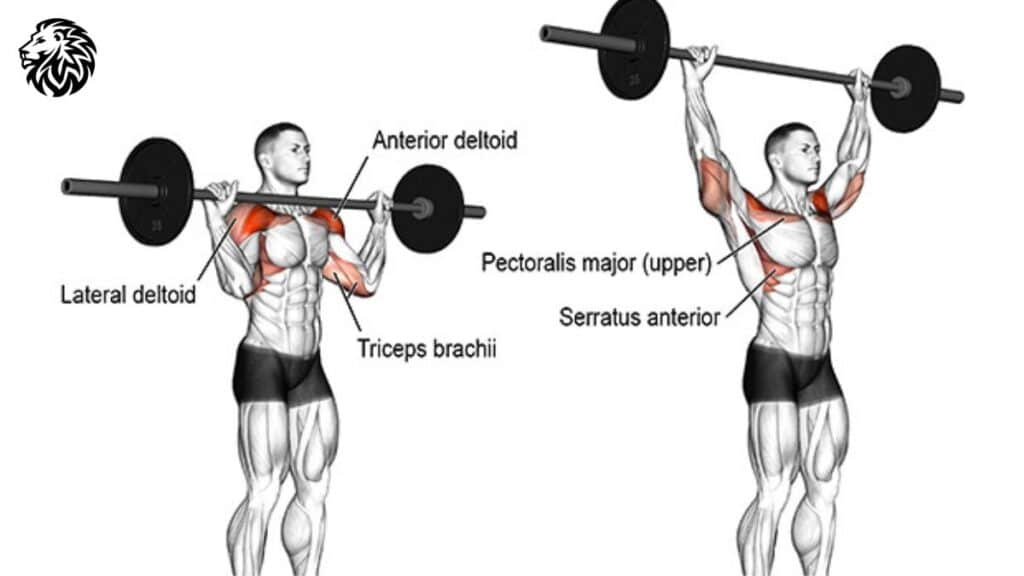
The Overhead Press, also known as the Military Press, is a staple in any shoulder workout and is often considered the ultimate test of upper body strength. This compound movement primarily targets the deltoids and triceps, but also works the core and lower body to a certain degree, as these muscles help stabilize your body during the lift. The exercise can be performed using a barbell or dumbbells, standing or seated.
To perform an overhead press, start by holding the weight at shoulder level with your palms facing forward. Engage your core and press the weight straight up until your arms are fully extended overhead. Ensure that you avoid arching your back as you press the weight up. Lower the weight back down to shoulder level in a controlled manner. This constitutes one repetition.
Lateral Raises
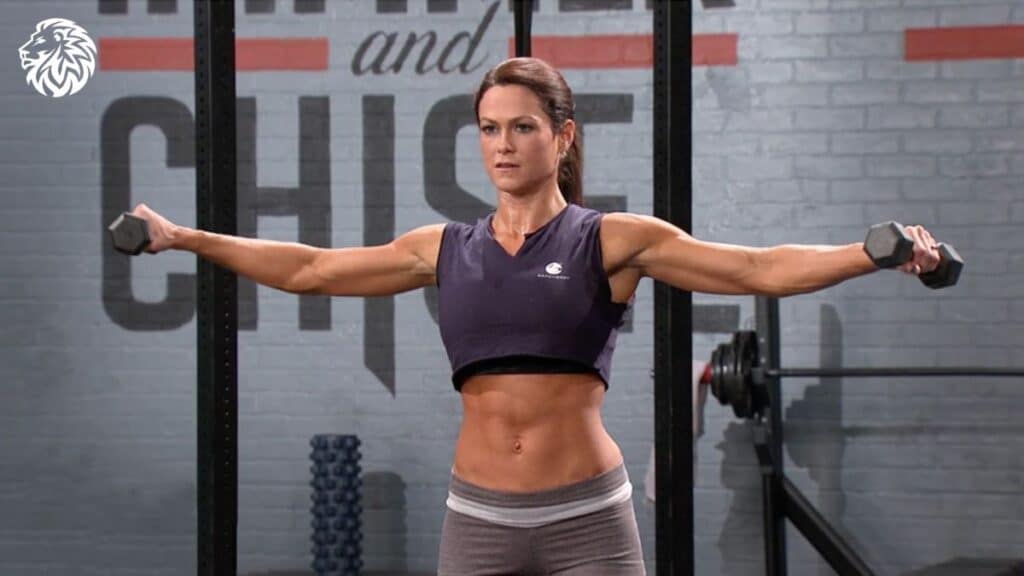
The Lateral Raise is an isolation exercise that specifically targets the lateral (middle) head of the deltoid. It’s an excellent movement for adding width to your shoulders, giving you a more pronounced V-shaped physique.
To perform lateral raises, stand upright, holding a dumbbell in each hand by your sides with a slight bend in your elbows. Keeping your torso stationary, lift the dumbbells to your side with a slight tilt at the wrist (like pouring water in a glass). Continue to lift the weights until your arms are parallel to the floor. Lower the weights back down in a controlled manner. This completes one repetition.
Front Raises
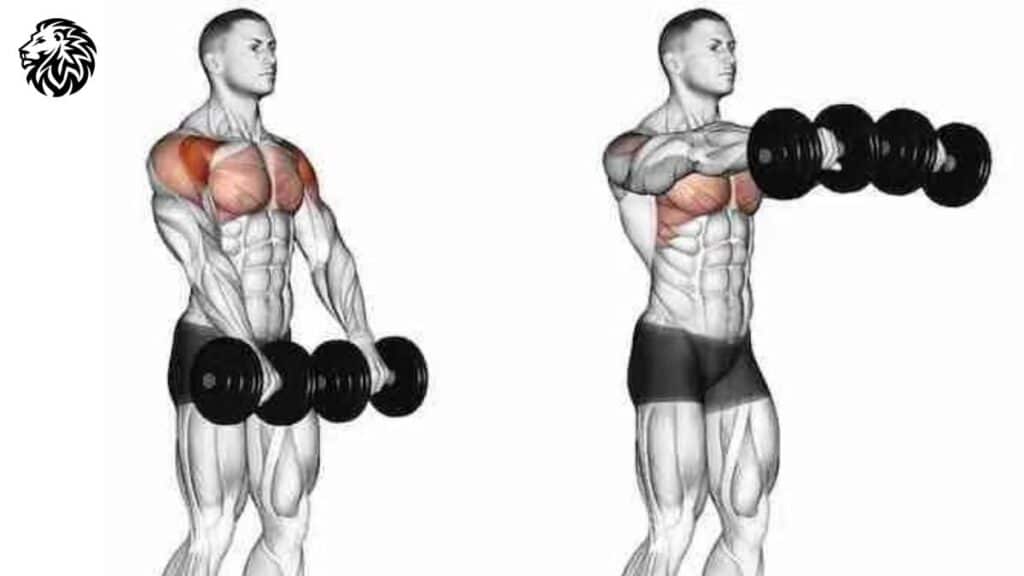
This exercise isolates the anterior (front) head of the deltoid. The Front Raise can be performed with dumbbells, barbells, or cables.
Starting in a standing position, hold your chosen weight with an overhand grip. Keeping a slight bend in your elbow, raise the weight in front of you until your arm is slightly above parallel to the ground. Lower the weight slowly to the starting position to complete one rep. Be careful to avoid swinging or using momentum to lift the weight.
Rear Delt Flyes
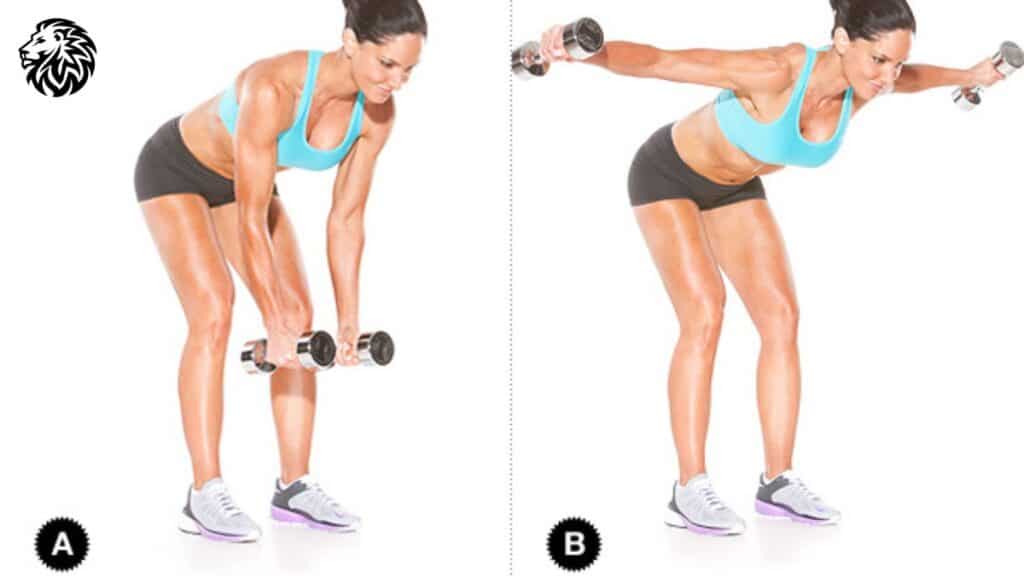
Often overlooked in shoulder training, the Rear Delt Fly is an essential exercise for developing the posterior (rear) deltoid. It also strengthens the upper back muscles.
To perform this exercise, hold a pair of dumbbells and stand with your feet hip-width apart. Bend your knees slightly and lean forward from your hips while keeping your back straight. With your palms facing each other, hold the dumbbells beneath your shoulders. Raise the dumbbells to the side, squeezing your shoulder blades together at the top of the movement. Lower the dumbbells back to the starting position in a controlled motion.
Shrugs
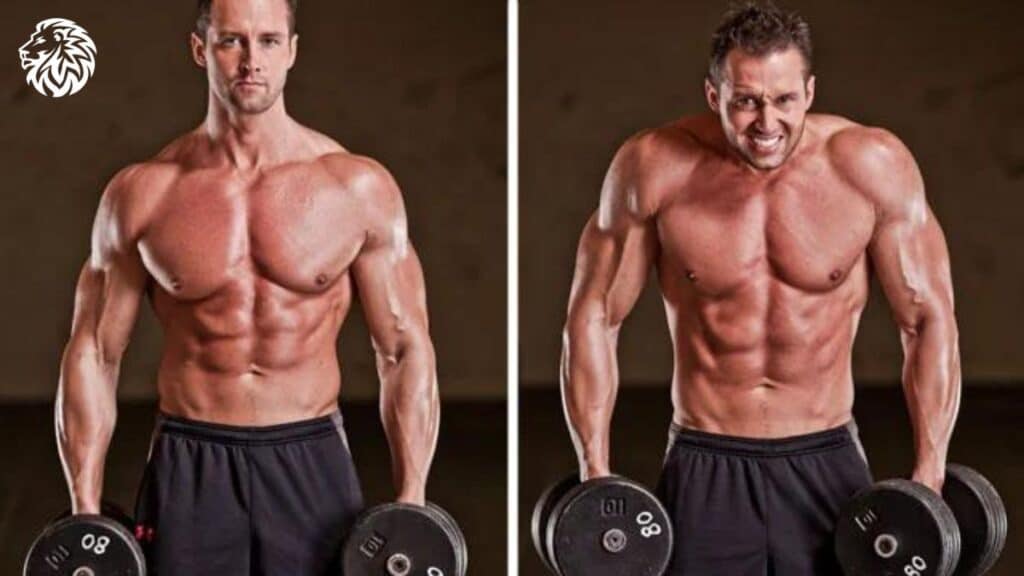
The shrug is a simple yet effective exercise for targeting the trapezius muscle, which extends down the back of the neck and upper spine. It also engages the upper part of the shoulders.
Stand up straight with a dumbbell in each hand, arms fully extended, and palms facing your torso. Keeping your arms straight, elevate your shoulders as high as possible as if you were trying to touch your shoulders to your ears. Hold the contraction at the top for a moment, then slowly lower your shoulders back to the initial position.
Arnold Press
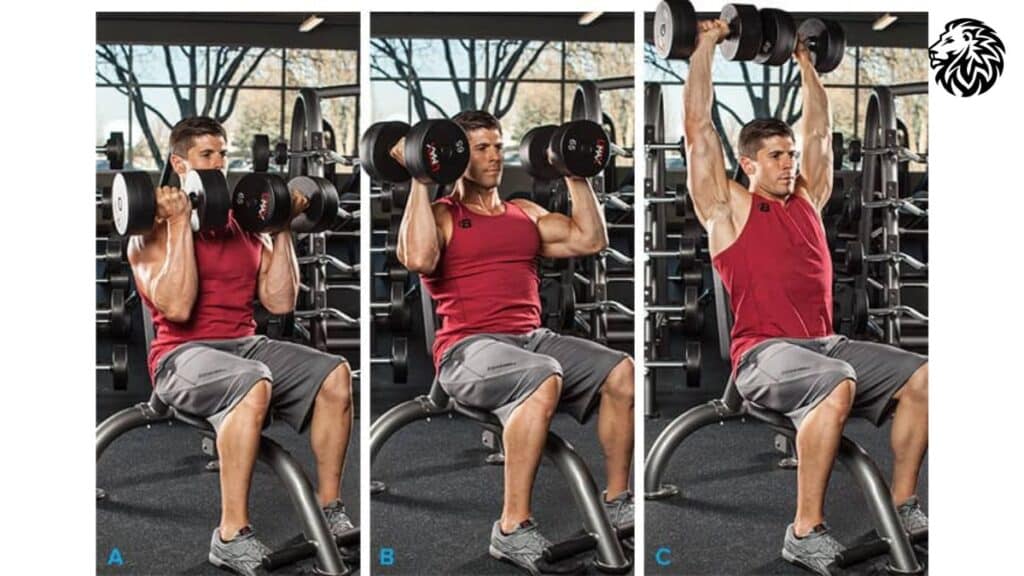
Named after Arnold Schwarzenegger, this is a variation of the overhead press that targets all three heads of the deltoid. The Arnold Press provides a well-rounded shoulder workout as it involves a rotation, engaging different parts of the deltoid at various points throughout the movement.
To perform the Arnold Press, start by sitting on a bench with back support, holding a dumbbell in each hand in front of you at upper chest level. Your palms should be facing your body and your elbows bent. Raise the dumbbells as you rotate the palms of your hands until they are facing forward, much like a traditional shoulder press. Continue lifting the dumbbells until your arms are fully extended above you. Pause at the top of the movement, then begin to lower the dumbbells while rotating your palms towards you, returning to the starting position. This completes one repetition.
Performing these exercises correctly and incorporating them into your shoulder training routine will greatly aid in developing bigger, stronger shoulders. However, it’s important to remember that proper form is paramount in ensuring effectiveness and preventing injury. If you’re unsure about any of these exercises, don’t hesitate to consult a fitness professional.
Creating a Balanced Shoulder Workout Routine
Explanation of a Balanced Workout Routine
A balanced workout routine is one that comprehensively targets all the muscles in a given muscle group—in this case, the shoulders. It should include a combination of compound exercises for overall strength and muscle mass, and isolation exercises to target specific areas of the shoulder. The routine should also consider the balance between the anterior, lateral, and posterior deltoids to prevent imbalances that could lead to poor posture or injury.
Sample Shoulder Workouts
Beginner Shoulder Workout:
- Seated Dumbbell Press: 3 sets of 8-12 reps
- Dumbbell Lateral Raises: 3 sets of 12-15 reps
- Dumbbell Front Raises: 3 sets of 12-15 reps
- Dumbbell Shrugs: 3 sets of 15-20 reps
Intermediate Shoulder Workout:
- Barbell Overhead Press: 3 sets of 6-8 reps
- Arnold Press: 3 sets of 8-12 reps
- Cable Lateral Raises: 3 sets of 12-15 reps
- Rear Delt Flyes: 3 sets of 12-15 reps
- Dumbbell Shrugs: 3 sets of 15-20 reps
Advanced Shoulder Workout:
- Push Press: 3 sets of 4-6 reps
- Arnold Press: 4 sets of 6-8 reps
- Cable Lateral Raises: 4 sets of 8-12 reps
- Face Pulls: 4 sets of 12-15 reps
- Rear Delt Flyes: 4 sets of 8-12 reps
- Barbell Shrugs: 4 sets of 10-15 reps
Importance of Progressive Overload in Shoulder Training
Progressive overload is a key principle in muscle building and strength training. It involves gradually increasing the stress placed on your body during exercise over time. This can be achieved by increasing the weight lifted, the volume of exercises (sets and reps), the intensity of exercises, or decreasing rest periods between sets.
By continuously challenging your muscles in this way, you force them to adapt and grow stronger and larger. It’s critical to implement progressive overload in your shoulder training to continue making progress and prevent plateaus. However, it’s equally important to listen to your body and avoid pushing too hard, too fast to prevent injuries. Always prioritize form and control over the amount of weight lifted.
Importance of Recovery in Building Bigger Shoulders
Role of Rest and Recovery in Muscle Growth
Recovery is a crucial part of muscle growth and strength building. During workouts, especially intense ones, muscle fibers are broken down. This breakdown is a normal part of the training process and sets the stage for muscle growth during the recovery period.
While the act of working out stimulates muscle protein synthesis (the process of building muscle), it’s during the rest and recovery period that the body repairs damaged muscle fibers, building them back stronger and larger. This is why, without adequate rest and recovery, you can end up hindering your progress or even risk overtraining, which can lead to fatigue, decreased performance, and injuries.
Strategies to Optimize Recovery
- Proper Nutrition: Consuming a balanced diet rich in protein, healthy fats, and complex carbohydrates is key to muscle recovery. Protein is particularly essential as it provides the amino acids necessary for muscle repair and growth. Additionally, consuming a meal or snack with protein and carbohydrates within 30 minutes to two hours after your workout can optimize muscle recovery.
- Sleep: Quality sleep is vital for muscle recovery. During sleep, the body produces growth hormone, which plays a significant role in tissue growth and muscle repair. Aim for 7-9 hours of quality sleep per night to provide your body with the time it needs to recover and grow.
- Stress Management: Chronic stress can negatively impact your body’s recovery processes and can lead to overtraining. It’s important to implement stress management techniques, such as mindfulness, yoga, deep breathing, or any other activity that helps you relax and unwind.
- Active Recovery: This involves doing low-intensity exercise on your rest days to keep your muscles active, promoting blood flow and aiding in recovery. This can be light cardio, yoga, or stretching exercises.
- Hydration: Water plays a crucial role in all bodily processes, including muscle recovery. It helps transport nutrients to your cells and remove waste products, both of which are critical during the muscle recovery process.
Remember, building bigger shoulders, like any fitness goal, is a balance of hard work, proper nutrition, and adequate rest. Take care of your body, and it will reward you with progress and improved performance.
Common Mistakes to Avoid When Training Shoulders
Lifting Too Heavy Too Soon: One common mistake is increasing the weight you lift too quickly. This can lead to poor form, which not only reduces the effectiveness of your workout but also increases the risk of injury. Instead, focus on lifting a weight that allows you to complete your sets with proper form. Only once you can comfortably perform the maximum recommended reps should you consider increasing the weight.
Neglecting the Rear Delts: Another common mistake is focusing too much on the anterior (front) deltoids and not enough on the posterior (rear) deltoids. This can lead to muscle imbalances, which can affect your posture and make you more prone to injuries. Make sure your workout routine includes exercises like rear delt flyes or face pulls to specifically target the rear delts.
Overtraining: Overtraining happens when you do not allow your muscles enough time to recover between workouts. This can lead to a plateau in muscle growth or even muscle loss, in addition to increasing your risk of injuries. Make sure to give your muscles enough time to rest and recover between workouts. As a general rule, you should allow at least 48 hours of rest before working the same muscle group again.
Not Using a Full Range of Motion: Using a full range of motion during your exercises is key to maximizing muscle growth. By doing so, you engage more muscle fibers, leading to greater muscle growth over time. Avoid the temptation to lift heavier weights at the expense of a full range of motion.
Poor Form and Technique: This is perhaps the most common mistake. Poor form not only reduces the effectiveness of your workout, but it can also lead to injuries. Always prioritize maintaining proper form over lifting heavier weights. If you’re unsure about the correct form for an exercise, don’t hesitate to seek guidance from a personal trainer or credible online resources.
By avoiding these common mistakes, you can make sure you’re training your shoulders effectively and safely, optimizing your shoulder growth over time.
Conclusion
We’ve covered a lot of ground in this article. We started with an understanding of the importance of having strong and bigger shoulders. We then moved on to discuss the effective exercises and how to perform them correctly. Next, we highlighted the importance of creating a balanced workout routine and introduced sample workouts for different fitness levels. We also stressed the role of recovery in muscle growth and provided tips to optimize it. Lastly, we discussed common mistakes to avoid when training shoulders.
Building bigger shoulders is a journey, and like any journey, it takes time, effort, and consistency. Don’t be discouraged if you don’t see immediate results. Remember, muscle growth is a slow process. But with consistent effort and the right approach, you will see progress over time.
Keep challenging yourself, but remember to listen to your body and rest when needed. Your body’s signals are your best guide to balancing training and recovery. Always prioritize form and control over the amount of weight lifted.
Keep fueling your body with nutritious food and plenty of water. Also don’t underestimate the importance of a good night’s sleep. Most importantly, enjoy the process. Celebrate your small wins and progress, and don’t forget to have fun along the way.
Keep pushing, stay committed, and before long you’ll be reaping the rewards of your hard work with stronger and bigger shoulders. Remember, the only bad workout is the one that didn’t happen. Keep going!







